ARTICLE AD BOX
Just now
Lamees Altalebi, Ahmed Nour, Abdirahim Saeed, Paul Cusiac ,BBC Arabic

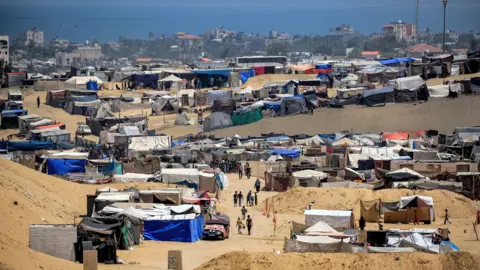 AFP
AFP
More than a million Palestinians - almost half of the total population of Gaza - have been displaced from the south of the territory over the past month, sharply worsening the already dire humanitarian situation, according to the UN.
The Israeli military began a ground operation in the southern city of Rafah on 6 May following seven months of war which saw many Palestinians flee to Rafah to escape fighting and bombardment elsewhere.
Israel says taking control of Rafah and eliminating the Hamas battalions there is crucial to achieving its war aims.
It told Palestinians in Rafah to move to sandy coastal areas or the city of Khan Younis, which is largely in ruins.
Now the UN is warning that the movement of such a large number of people in such a short timeframe alongside a sharp fall in aid deliveries is having deadly consequences.
"People are dying every single day... the vast majority according to reports are women and children.
Many of them are dying unnecessarily due to lack of medical care. Children are dying due to malnutrition and dehydration," Juliette Touma, spokeswoman for the UN agency for Palestinian refugees Unrwa, told BBC Arabic.
Satellite photos show extent of displacement
On 6 May Israeli military spokesman Avichay Adraee instructed Palestinians in eastern Rafah to evacuate to an “expanded humanitarian zone” that stretches from the nearby al-Mawasi area to the central town of Deir al-Balah and said they would find field hospitals, tents, food and other supplies.
The Israel Defense Forces (IDF) then took control of the Rafah border crossing with Egypt, which lies to the south-east of Rafah city, as it began what it described as a “precise counterterrorism operation” against Hamas operatives and infrastructure in eastern Rafah. The US had said it opposed a "major ground operation" in Rafah.
While the IDF instructed people in eastern Rafah to evacuate, central and western parts of the city were not covered by the evacuation orders.
But Palestinians in these parts of Rafah have also fled their temporary structures as deadly bombardment in different areas around the city continued and troops advanced into central neighbourhoods.
One Israeli missile strike on 26 May set fire to a camp for displaced Palestinians near Tal al-Sultan to the north-west of Rafah, killing 45 people including many children, according to the Hamas-run Palestinian health ministry.
The strike caused global outrage. The IDF later said it had not expected such a fire to break out.


Recent satellite imagery of western and central Rafah analysed by BBC Arabic showed thousands of tents sheltering displaced people have disappeared in recent weeks.
Aerial pictures of western Rafah from 1 June show areas that were densely populated have become deserted.
Similar images of Tal al-Sultan to the north-west of Rafah, where a major urban refugee camp is located, show areas of land have been cleared of tents.
On Thursday the head of Unrwa Philippe Lazzarini said all of his agency's 36 shelters in Rafah were empty of people.

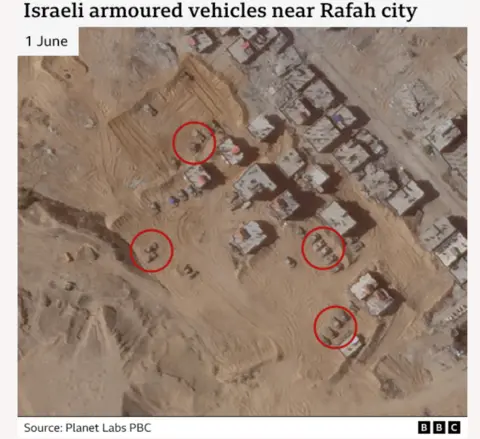
In recent weeks, Israeli troops have been gradually pushing into built-up neighbourhoods of Rafah from the east and south.
An armoured vehicle and troops were seen on 28 May in a video posted on social media at the central al-Awda roundabout.
Satellite images from 1 June also show several armoured vehicles positioned near Rafah.
The satellite image taken on 1 June shows the destruction of al-Abrar mosque as well as severe damage to nearby market buildings in central Rafah.
The IDF has also declared control of much of the strategically important buffer zone along the Gaza-Egypt border known as the Philadelphi Corridor.
Deteriorating humanitarian conditions
The UN and other aid agencies have been warning the assault on the city is having catastrophic consequences.
Mr Lazzarini said Unrwa had to stop health and other services in Rafah and said his agency had only been able to pick up 450 trucks of supplies entering Gaza over the past three weeks
"This is nothing in the face of the needs," he said.
World Health Organization chief Dr Tedros Adhanom Ghebreyesus said fighting had "severely crippled" healthcare provision in Rafah where he said tens of thousands of vulnerable people were still present.
He said the UAE field hospital in Rafah city was the "only facility in the area providing health services" but was "increasingly difficult to reach due to hostilities".
There was also only one fully functional field hospital in the al-Mawasi area, he said.
He called for the Rafah crossing to be reopened saying its closure was making it harder to get supplies and staff into Gaza.
The Rafah crossing in southern Gaza, which had been the main entry point of aid entering via Egypt, has been closed after Israel took control of the Palestinian side of the crossing in early May.
The Hamas-run health ministry also said the continued closure of the Rafah crossing meant severely wounded Palestinians could not be evacuated for potentially lifesaving treatment abroad. Some 25,000 wounded Palestinians needed treatment abroad, it said.
Israel says it is facilitating the entry of aid through the other point of entry in southern Gaza, Kerem Shalom. On Monday Cogat, the Israeli defence ministry body that coordinates humanitarian aid to Gaza, insisted that the Gaza side of Kerem Shalon was "at full capacity", with "the content of over 1,000 aid trucks waiting to be picked up by UN aid agencies".
However insecurity has meant the Gaza side of the Kerem Shalom crossing has at times been too dangerous to access, the UN has said.
On Tuesday the UN humanitarian agency OCHA said access constraints "continue to undermine the safe delivery of life-saving humanitarian assistance throughout Gaza", and conditions "further deteriorated" in May.
A city in flux
Rafah had a population of 250,000 people before the war began in October.
That figure swelled to 1.4 million people in the following months, the UN says, turning Rafah into a vast refugee camp. In October, the IDF told civilians in northern Gaza including Gaza City to move south of the Wadi Gaza riverbed. Its subsequent assault on other areas including the city of Khan Younis displaced Palestinians further south.
The war was triggered by Hamas’s unprecedented attack on 7 October, during which about 1,200 people were killed and 252 others were taken hostage.
More than 36,000 people have been killed in Gaza, the Hamas-run health ministry there says.
On 24 May, the International Court of Justice (ICJ) ordered Israel to “immediately halt its military offensive, and any other action in the Rafah Governorate, which may inflict on the Palestinian group in Gaza conditions of life that could bring about its physical destruction in whole or in part”.

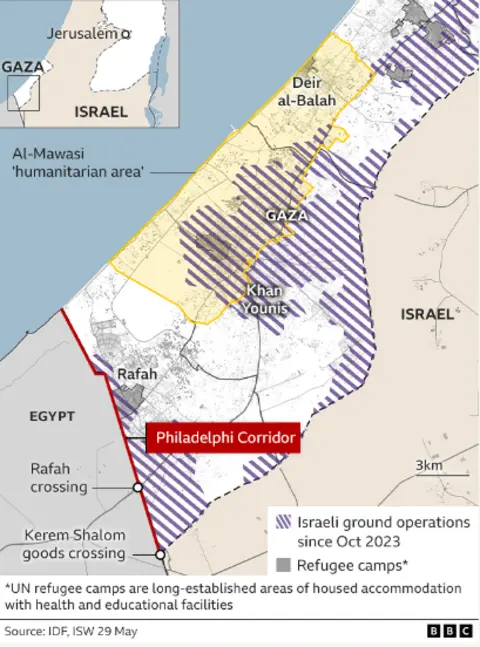

 10 months ago
29
10 months ago
29
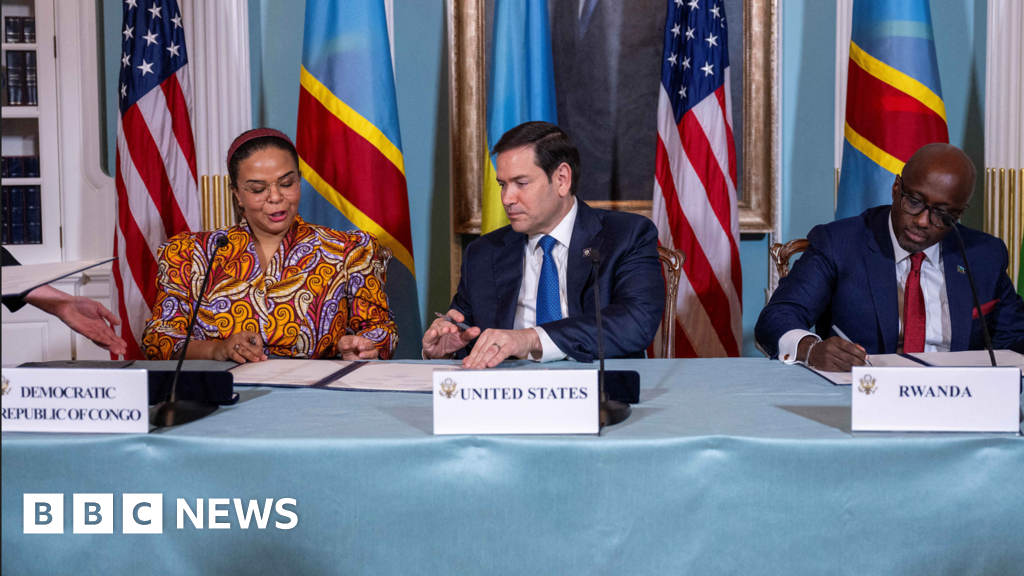
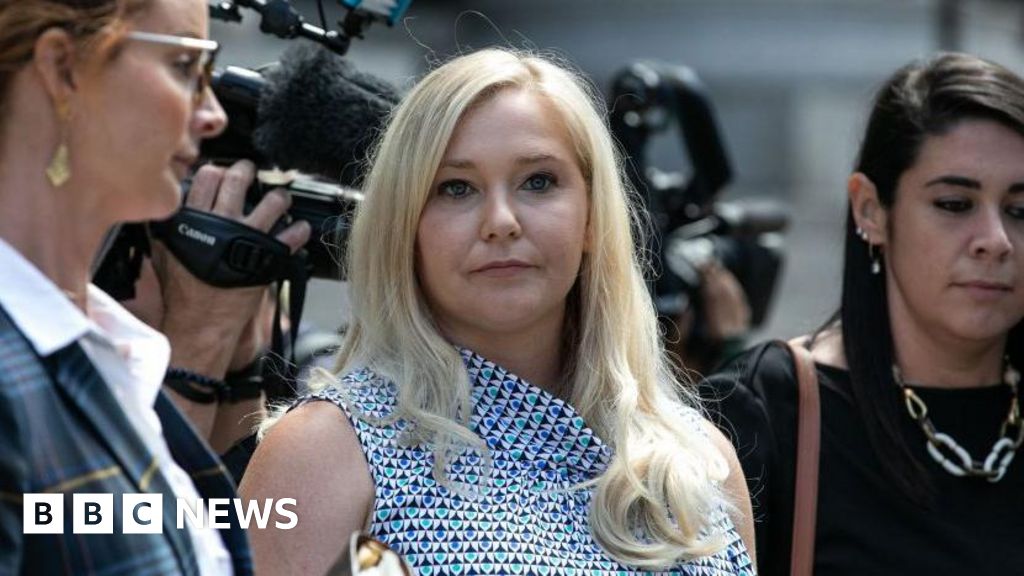






 English (US) ·
English (US) ·